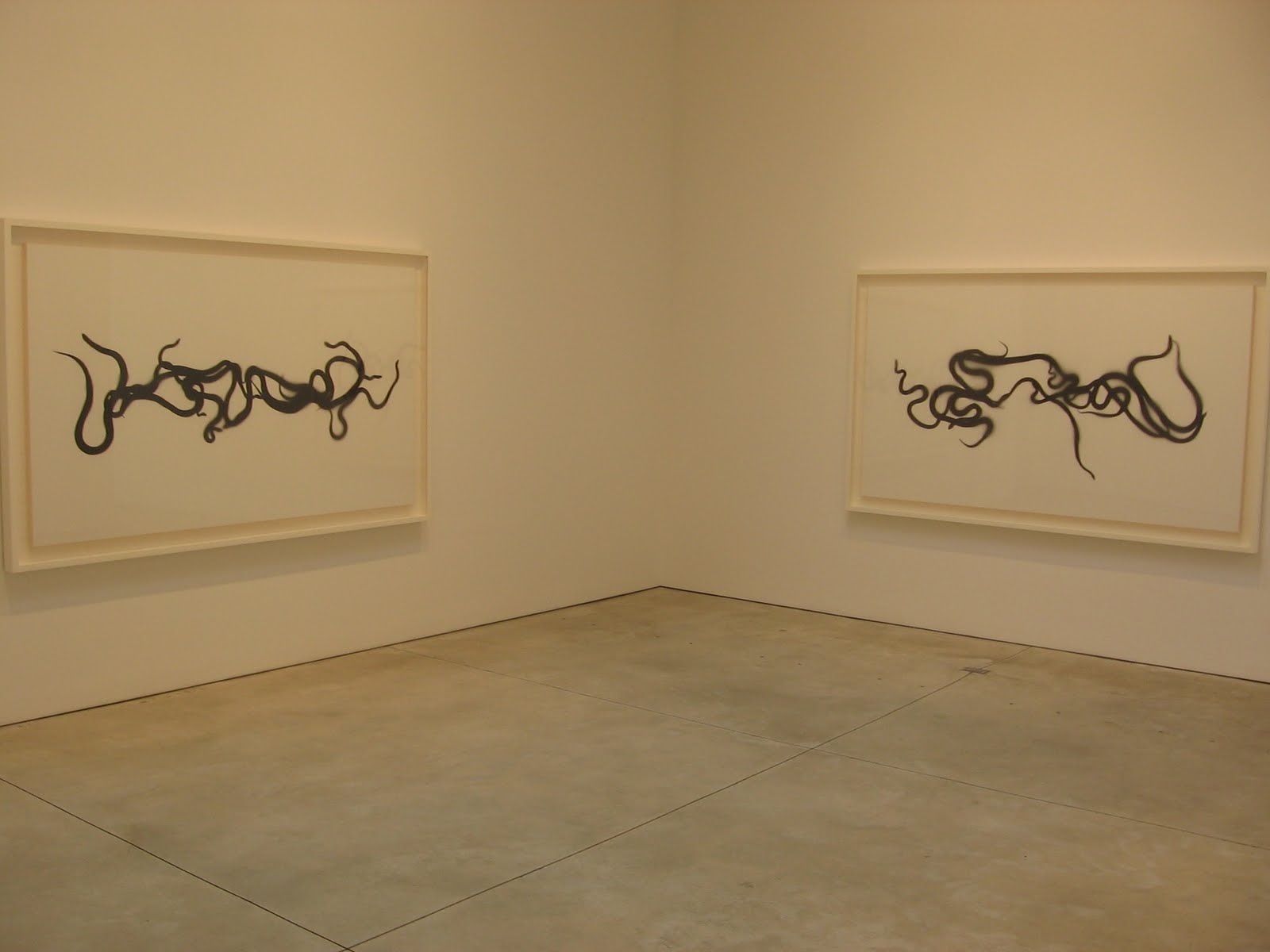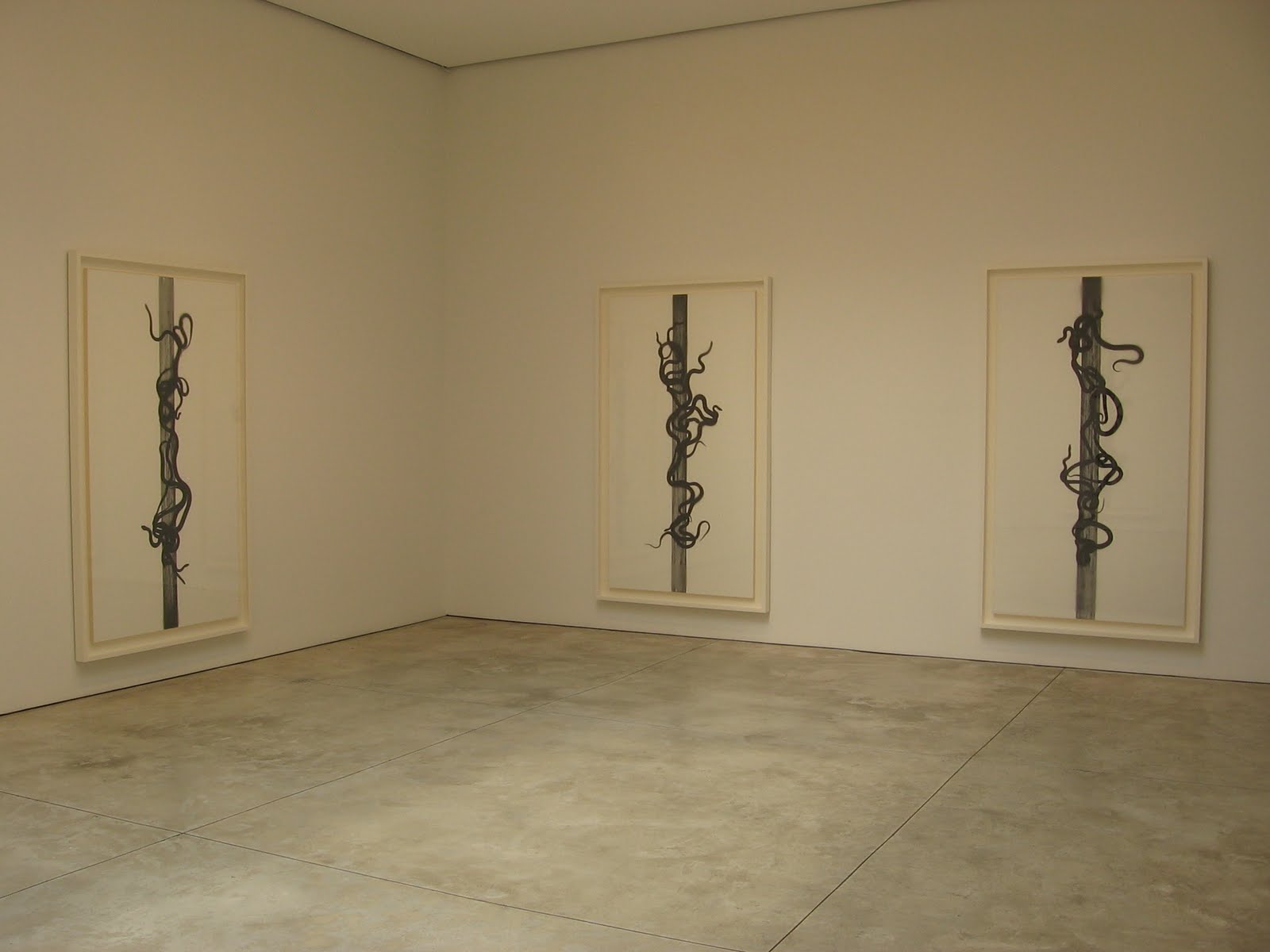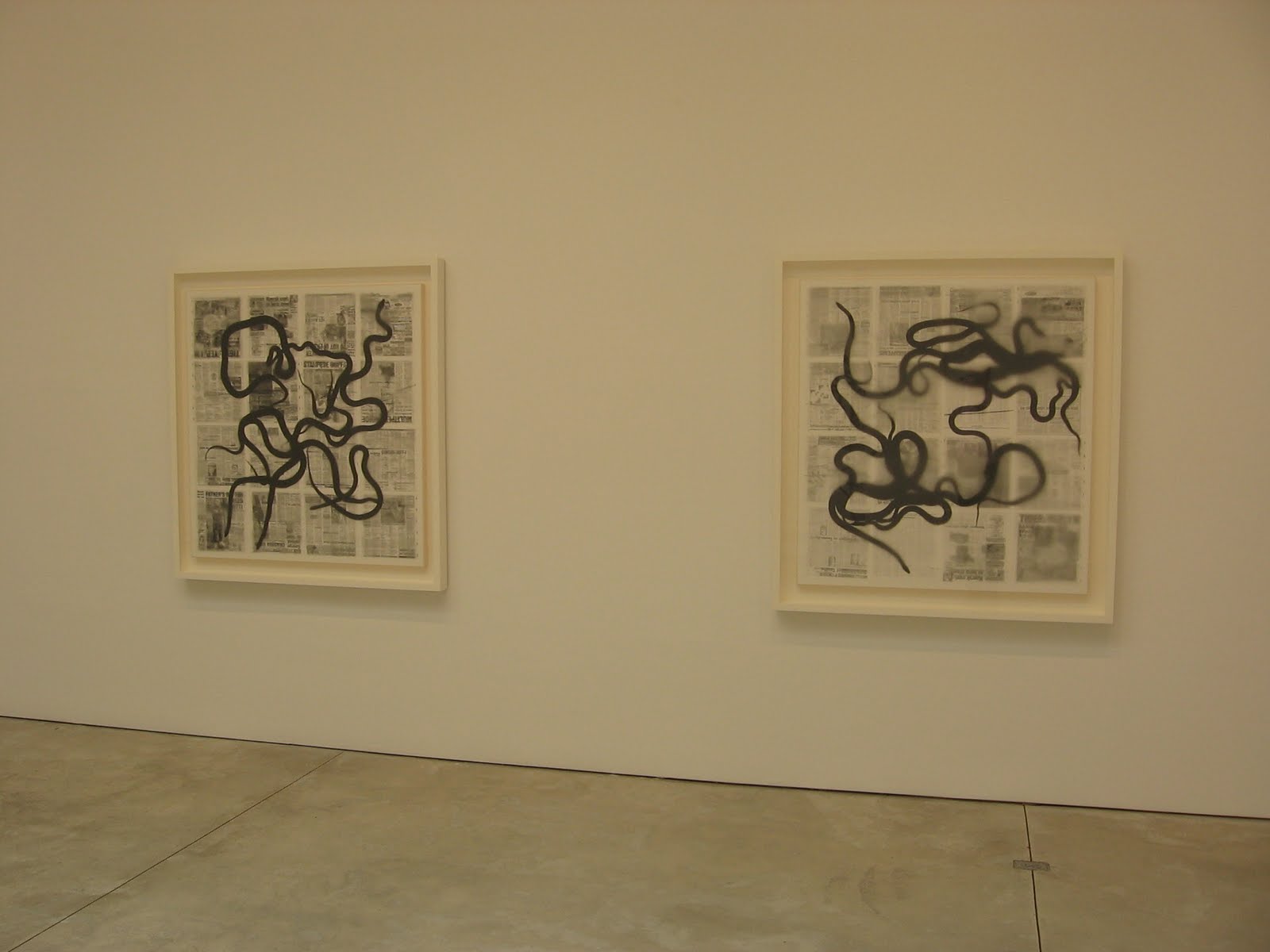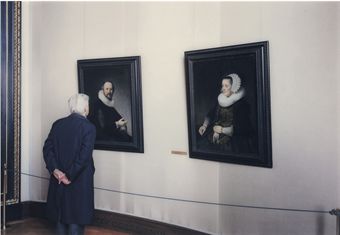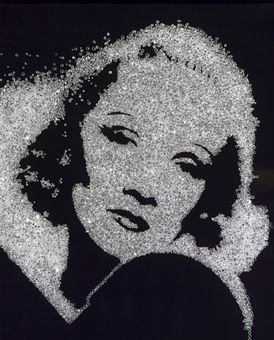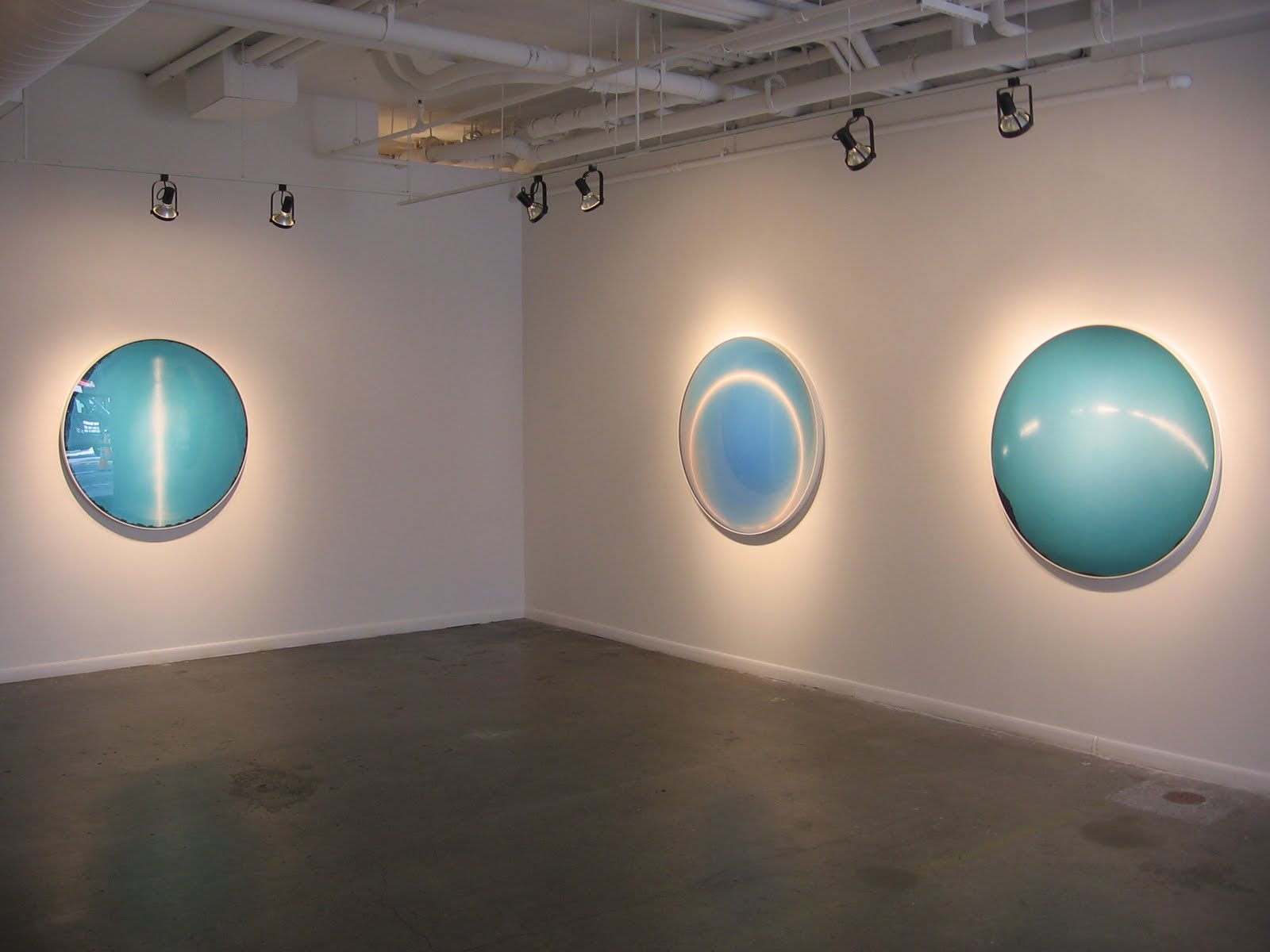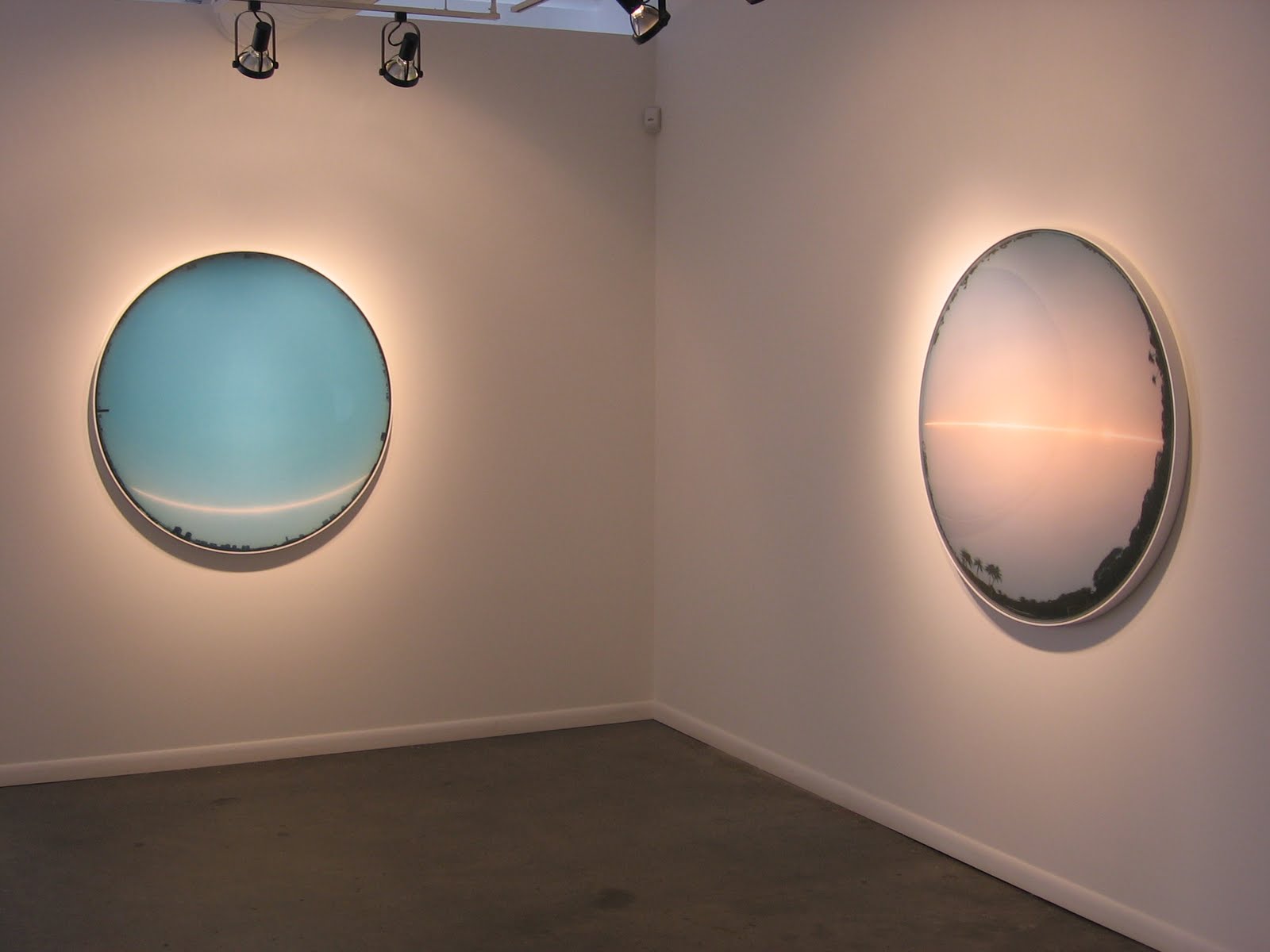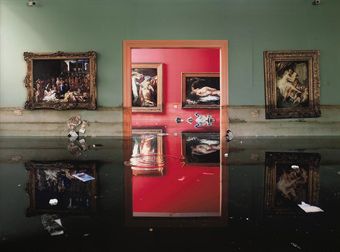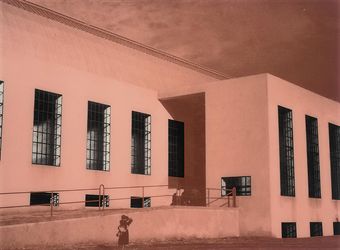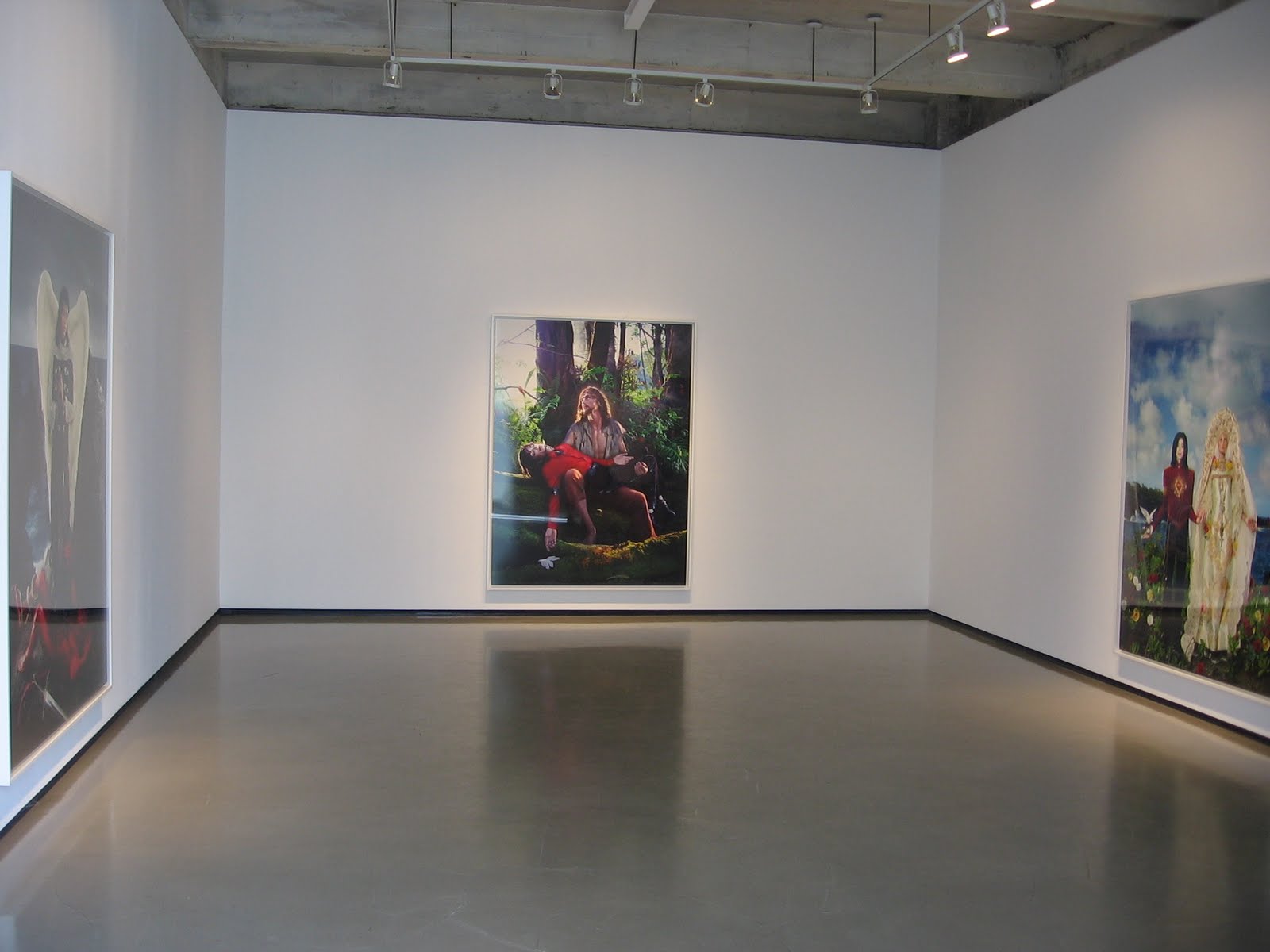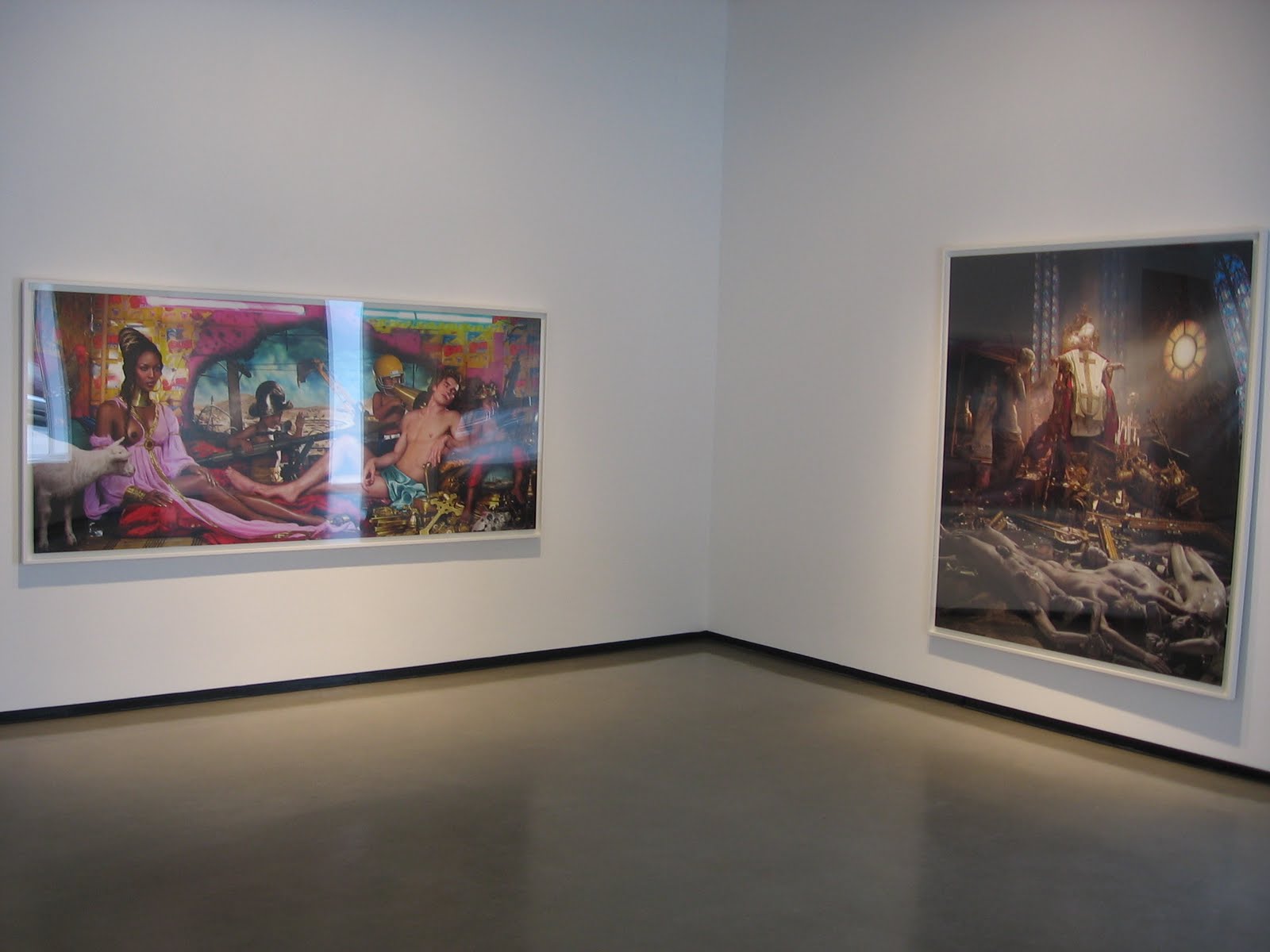JTF (just the facts): A large group show of recent contemporary work made by New York-based artists, displayed across all four floors of the PS1 building. A total of 68 artists have been included in the exhibit, 19 of which (roughly 28%) can be called photographers (using a broad definition of that term). The show was curated by Klaus Biesenbach, Connie Butler, and Neville Wakefield. Unfortunately, PS1 has both prohibited photography in the galleries and failed to provide images of the included works on its public website, so annoyingly, this review has neither installation shots or image highlights.
The following photographers are included in the exhibit, with the number of images on view in parentheses:
Michele Abeles (7)
Deville Cohen (3, 1 video)
LaToya Ruby Frazier (12, 1 video)
Zipora Fried (3)
Daniel Gordon (5)
K8 Hardy (18)
Alisha Kerlin (8)
Deana Lawson (6, 1 large installation)
Leigh Ledare (22, 1 stack of images, 3 videos)
Alice O’Malley (12)
Lucy Raven (1 photo animation, 1 video, 1 case of ephemera)
Mariah Robertson (8)
David Benjamin Sherry (19)
Erin Shirref (28)
Xaviera Simmons (1 grid of 42, 2 others)
A.L. Steiner (1 three wall installation)
Elisabeth Subrin (4)
Hank Willis Thomas (1 set of 82)
Pinar Yolacan (8)
Comments/Context: Given our passionate interest in photography, sprawling group shows like Greater New York always feel like a bit like a treasure hunt; we wander through the galleries in search of the photography, never knowing what might be beyond the next white wall. With this show’s thematic focus on brand new work from emerging contemporary artists from the New York area, we expected to be surprised and challenged by some work and to be bored by much of the rest, and hoped to be introduced to some new names worth keeping an eye on. I think our expectations were realistically low, and I think the show delivers the ungainly mixed bag that we expected.
Trying to discern themes or patterns in such a diverse body of photography is a tricky prospect, but given the high highs and the low lows we have experienced in the past five tumultuous years, the fact that so much of the photographic work on display is inward looking and self reflective, with a heavy dose of performance, was a surprise. Perhaps this is a result of early career artists still looking to refine their voices and seeking that clarity by peering inward, but I came away a bit troubled by the tin ear the New York artists seem to be showing toward the important issues of the day. I’m a sucker for big meaty new ideas that make my eyes bug out, but most of the photography I found here was both preoccupied with personal nuances and lacking in radical innovation.
That isn’t to say that there wasn’t plenty of work to enjoy on display. I’ve detailed a handful of favorites and special attractions below:
- I stood in front of Xaviera Simmons’ large array of appropriated images of boat people and refugees hung in the entry of the show for quite a long time, feeling the combination of isolation, desperation and wild hope of being packed in like sardines on a makeshift raft or rusting barge, heading for the unknown. This was one of the only pieces in the exhibit that I thought tried to get at the uncertain spirit of the times, that sense of unease and lack of control that has been so common of late.
- Deville Cohen’s sparse constructed scenes, made up of ladders, step stools and shredded paper, and pictures of ladders and step stools, have intriguing layers in their simple conceptual inversions. The video of the fake car wash (once again made from these primary materials) mixes humor and creative inventiveness to successfully evoke an everyday object. These works seem like a promising set of ideas worth further exploration.
- Pinar Yolacan’s Mother Goddess series also uses a relatively simple construct to generate something more powerful. In these works, Yolacan completely covers her models from head to toe, wrapping them like mummies in skin tight cocoons of denim, black latex, or patterned fabric. They are then posed against monochrome colored backgrounds, lounging like odalisques. The resulting images are weirdly mute, like ancient fertility figurines or fetish objects.
- LaToya Ruby Frazier is clearly another emerging photographer with some momentum behind her. Her formally crisp and sinuously elegant black and white studies of falling down houses, piles of trees, bedside tables and a burger on a countertop are entirely evocative of a certain set of personal life circumstances. In this case, a look inward has produced something that isn’t overly self-conscious, but is rather abstracted just enough to be universal, both unflinching and quietly beautiful at the same time.
- The work of Mariah Robertson, Hank Willis Thomas, and Daniel Gordon on view is generally a repeat or a refinement of work we have seen recently at other NY venues. Robertson’s 88 is different than her single, ragged edged works in that it is a long ribbon of overlapping imagery, billowing across the ceiling and piling up on the floor, mixing checkerboards, piles of books, petrified wood, and chemical drips in her signature darkroom style; her aesthetic is growing on me over time. It was also terrific to see Thomas’ full Unbranded series (82 images), where appropriated advertisements have been stripped of their logos, leaving behind a distorted history of black culture since 1968; while the pictures stand on their own as individual artworks, seeing the series together adds a layer of elapsed time and a view into the evolution of cultural stereotypes.
- K8 Hardy’s self portraits have a playfulness that is infectious. Across the wall, she shape shifts, alternately posing with purple hair, puckered lips, orange sunglasses, wearing a wrestling belt, or standing with lawn mowers, often adding in a seemingly random photogram for effect. It sounds overly staged I know, but somehow it all works, successfully mixing eccentric personal style and play acting.
- I can’t really say that I liked Leigh Ledare’s erotic images of his mother’s sex life, but they certainly push on cultural taboos and get your attention. They combine a sense of tragedy with creepy repulsiveness; they’re explicit, confrontational, disturbing, and sad all at the same time. My guess is most people will truly hate these pictures, but like them or not, they’re challenging and weirdly memorable.
Overall, I think there are a few nuggets of photographic promise to be found amidst the slurry here if you are willing to invest the time in exploring the endless jumble of rooms filled with art. While I was pleased to see how much photography has become intertwined with the general practice of contemporary art making, particularly in the NY scene, I have to say I was a bit disappointed that so few in this emerging bunch seem to have found a singular voice of durable originality.
Collector’s POV: Since most of these artists are early in their careers and the work is generally fresh out of the studio, none of it has yet migrated to the secondary markets. So the only real option for interested collectors is to follow up with gallery representatives or directly with the artists themselves. Below is a first pass list of easily identifiable gallery relationships and artist websites; if I’ve missed (or misidentified) important relationships or sites, please add them in the comments for the benefit of all:
.
Michele Abeles: artist site (here)
Deville Cohen: Nowhere Gallery (here)
LaToya Ruby Frazier: Higher Pictures (here), artist site (here)
Zipora Fried: On Stellar Rays (here)
Daniel Gordon: Zach Feuer Gallery (here), artist site (here)
K8 Hardy: Reena Spaulings Fine Art (here)
Alisha Kerlin: artist site (here)
Deana Lawson: artist site (here)
Leigh Ledare: was Rivington Arms (here); not sure now
Alice O’Malley: Isis Gallery (here), artist site (here)
Lucy Raven: artist site (here)
Mariah Robertson: Marvelli Gallery (here), artist site (here)
David Benjamin Sherry: artist site (here)
Erin Shirref: Lisa Cooley Fine Art (here), artist site (here)
Xaviera Simmons: unknown
A.L. Steiner: unknown
Elisabeth Subrin: Sue Scott Gallery (here)
Hank Willis Thomas: Charles Guice Contemporary (here), artist site (here)
Pinar Yolacan: was Rivington Arms (here), not sure now; artist site (here)
Rating: * (one star) GOOD (rating system described here)
Transit Hub:
- Reviews: NY Times (here), Village Voice (here), WNYC Gallerina (here), L Magazine (here), Huffington Post (here)
Greater New York 2010
Through October 18th
MoMA PS1
22-25 Jackson Avenue
Long Island City, NY 11101
 JTF (just the facts): A total of 13 color photographs, framed in white with no mats, and hung in the single room gallery space (with a small dividing wall). All of the works are archival pigment prints. The images on view come in three physical sizes with corresponding edition sizes: 22×29 in editions of 25, 32×42 in editions of 10, and 40×53 in editions of 5. There are 2 of the smallest size, 6 of the middle size, and 5 of the largest size in the show. All of the works were made between 2008 and 2010. (Installation shots at right.)
JTF (just the facts): A total of 13 color photographs, framed in white with no mats, and hung in the single room gallery space (with a small dividing wall). All of the works are archival pigment prints. The images on view come in three physical sizes with corresponding edition sizes: 22×29 in editions of 25, 32×42 in editions of 10, and 40×53 in editions of 5. There are 2 of the smallest size, 6 of the middle size, and 5 of the largest size in the show. All of the works were made between 2008 and 2010. (Installation shots at right.)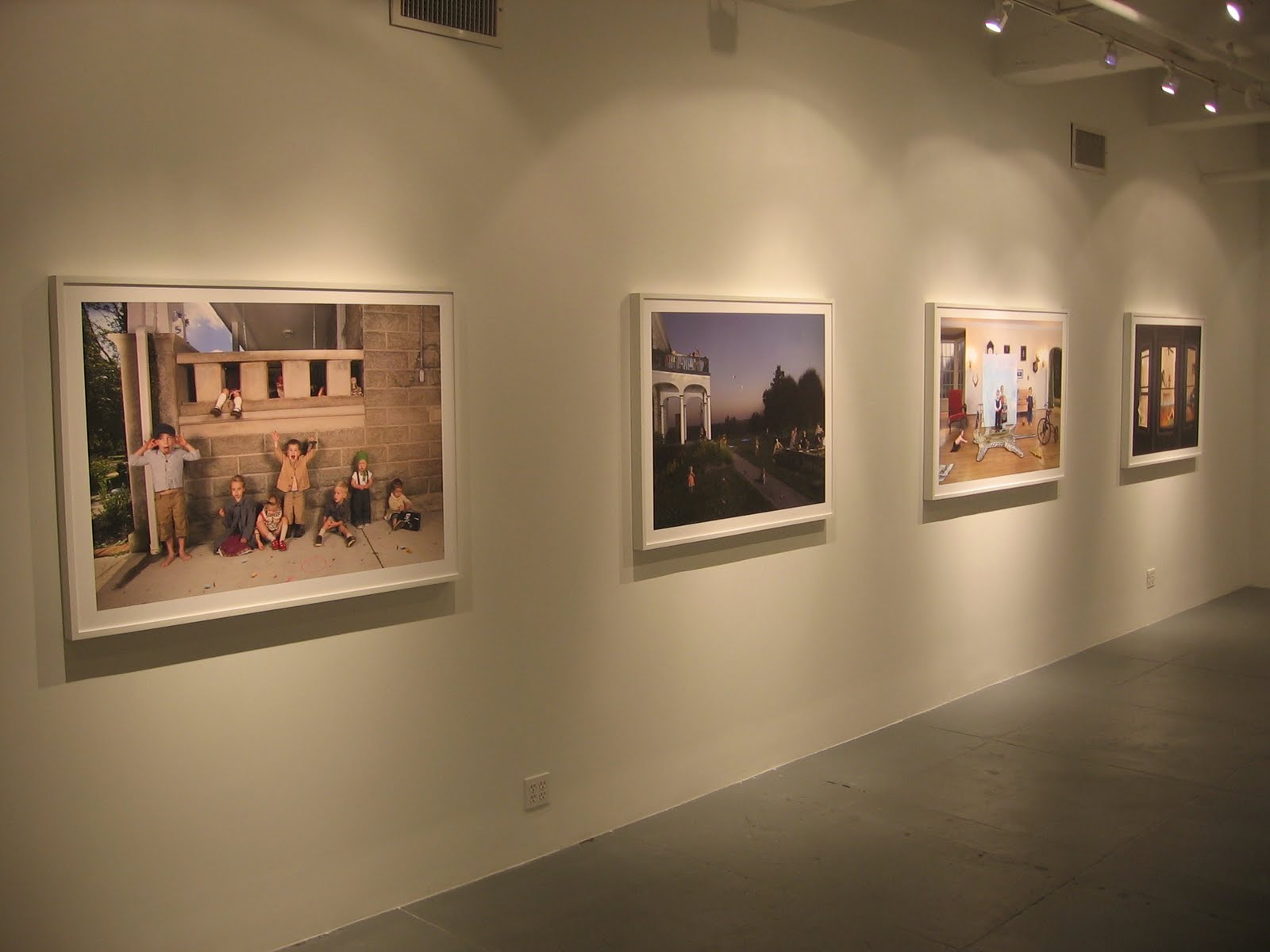 My favorite picture in the show is High Dive, where a gaggle of mismatched and unmonitored children fire straggly dolls off the second floor deck of a suburban house toward a blue plastic wading pool, while the parents sit outside on the lawn and drink wine in the twilight, generally oblivious to the action going on nearby. An appropriate assortment of abandoned clothing and shoes is strewn across the landscape. It captures both the imagination of summertime childhood play as well as the stress release of communal parenting. I can entirely imagine the scene devolving into tears (likely from a now remorseful or angry doll owner), or perhaps a back-handed shout of “No Injuries!” from one or another of the otherwise happily distracted parents.
My favorite picture in the show is High Dive, where a gaggle of mismatched and unmonitored children fire straggly dolls off the second floor deck of a suburban house toward a blue plastic wading pool, while the parents sit outside on the lawn and drink wine in the twilight, generally oblivious to the action going on nearby. An appropriate assortment of abandoned clothing and shoes is strewn across the landscape. It captures both the imagination of summertime childhood play as well as the stress release of communal parenting. I can entirely imagine the scene devolving into tears (likely from a now remorseful or angry doll owner), or perhaps a back-handed shout of “No Injuries!” from one or another of the otherwise happily distracted parents.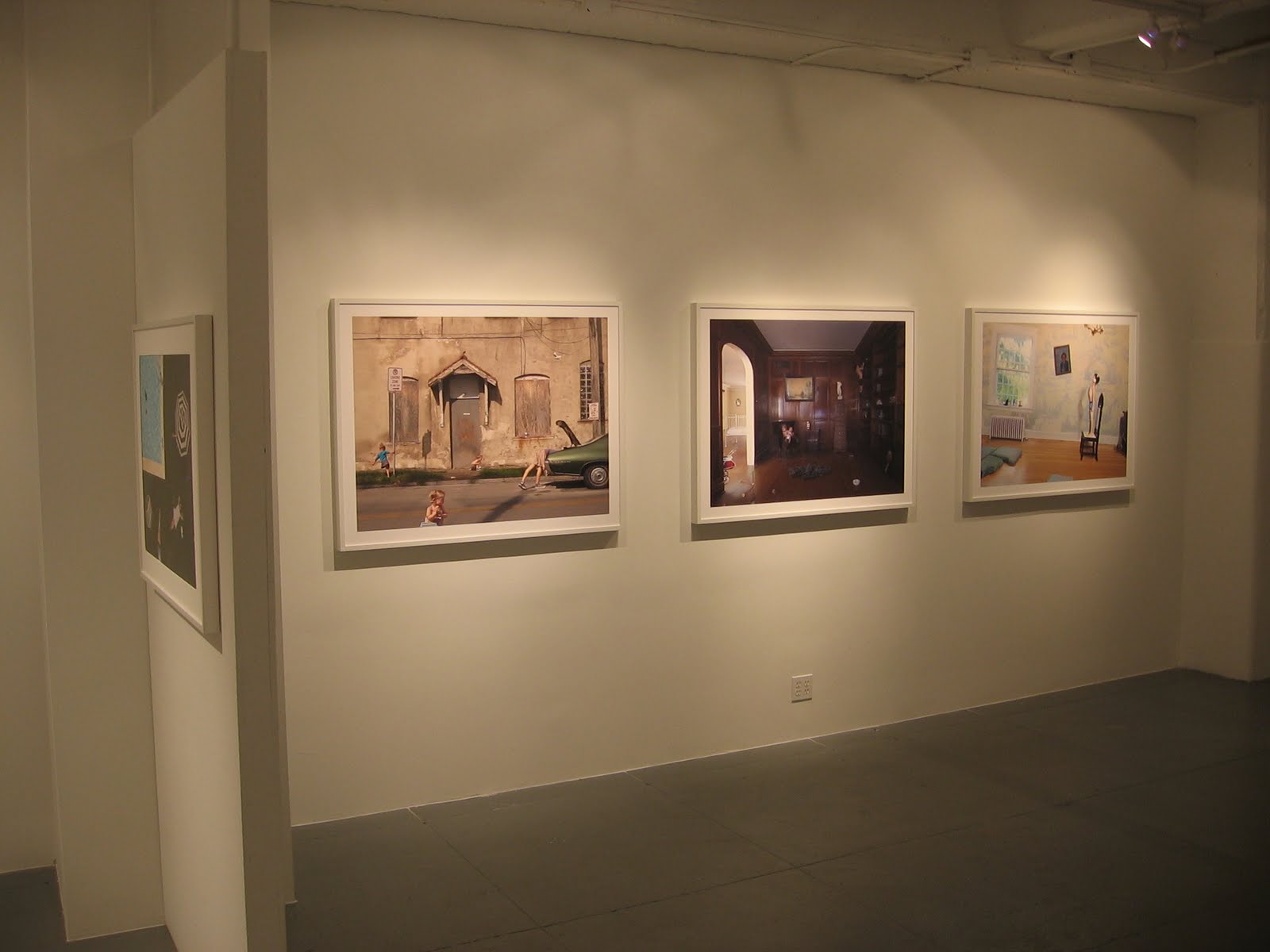 While the overt staginess of these pictures can be a bit distracting, their mixing of obvious unreality with telling glimpses of underlying truth is what makes these pictures work. We’ve certainly experienced variations on this kind of surreal, random weirdness; perhaps lacking the candy-colors, shiny floors, and perfect lighting, but close enough to have resonance and create knowing chuckles. Blackmon references the Dutch Renaissance painter Jan Steen in her artist statement, and the images do have a constructed, painterly feel, drawn from memory and recreated using the powerful tools of digital photography.
While the overt staginess of these pictures can be a bit distracting, their mixing of obvious unreality with telling glimpses of underlying truth is what makes these pictures work. We’ve certainly experienced variations on this kind of surreal, random weirdness; perhaps lacking the candy-colors, shiny floors, and perfect lighting, but close enough to have resonance and create knowing chuckles. Blackmon references the Dutch Renaissance painter Jan Steen in her artist statement, and the images do have a constructed, painterly feel, drawn from memory and recreated using the powerful tools of digital photography.
